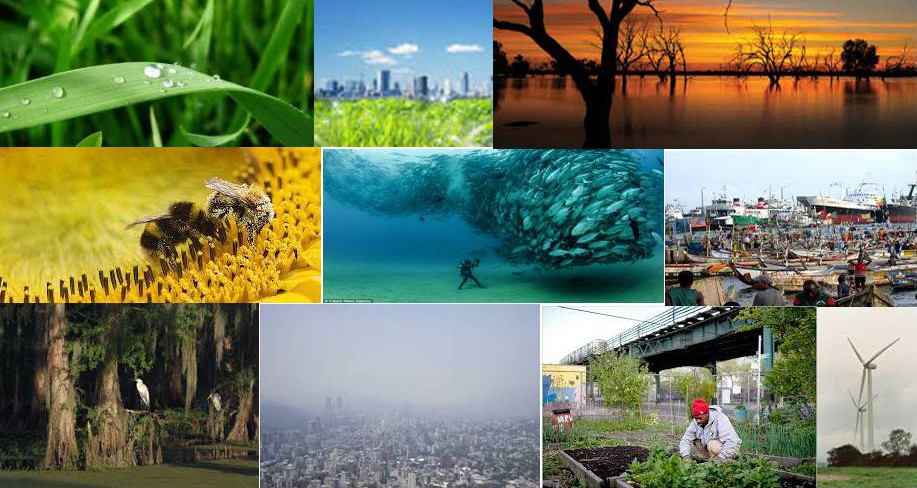For this assignment, you may conduct research individually or in teams of two or three on some aspect of the economic impact – positive or negative – of a local business, a green building, garden, open space project, super-fund site, community project, or community resource use problem.
1. You will have many options to choose from, and ideally your choice should reflect both your interests and thoughts about how the location you choose relates to a particular course topic. Your research will involve a visit to the site and a set of questions to guide this field-based research. In addition, you are strongly encouraged to develop further questions of your own.
2. Six broad topic areas are outlined here. Any of these topic areas may be used for the community-based research project, but you are not limited to these choices. These can serve as a beginning point in guiding you to develop your own proposal. The sites or communities you visit, the people you speak with either informally or formally (as in a brief interview), will vary with the type of project you decide to undertake. Links to additional resources follow.
3. In the course of your day of community research, you should document your findings in a number of formats – photographs, notes, comments or quotes from people interviewed, and (optionally) a blog post on the course site. The research that you conduct for this project will also be incorporated into your course case study project.
4. The research that you conduct for this project will be an important resource to be incorporated into your end-of-semester research project.
SOME XAMPLES OF RESEARCH/TOPIC AREAS FOR THE COMMUNITY-BASED RESEARCH PROJECT
1. Food Deserts: a visit to a community with few healthy food options would be reviewed in terms of specific questions such as: 1) What are the economic costs to communities lacking adequate access to healthy food choices? The emphasis here is not on coming up with a numerical value, but a thoughtful discussion of the qualitative effects: potential health impacts; the probability of a greater incidence of health problems such as heart disease, diabetes, obesity, etc. that have been associated with lack of healthy food choices). 2) If there is a greater incidence of health related effects, how does this have a potential economic impact? (i.e., health care costs because of more visits to medical providers; inability to work due to poor health; reproducing similar food choices for the next generation); How do these potentially translate into increased economic costs over time? 3) What changes can be made at the local community level to increase food choices for residents?
2. Climate change issues: Example –the environmental and economic impact of Hurricane Sandy on a coastal community in Brooklyn (or elsewhere in NY); what were the principal economic impacts as measured by losses to local businesses, homes of residents, ecological impact caused by land erosion, ecosystem damage, and the economic costs of rebuilding and replacing. Are there any resources that are projected to be difficult to replace or regain? Why?
3. Building design and land use: Cost savings from environmentally conscious/green design and resource use; What are the principal energy sources? Are they primarily non-carbon based fuel sources such as solar/wind/other? What resources in the building are recycled and how? (i.e. building’s air; water, other). Are their annual cost savings for the building’s operations relative to the use of traditional design and resource use? If the building is a business, how have cost savings to the business been estimated? If a residential building, are there cost savings to the residents? (i.e., lower electric, heating bills? Other cost reductions?) How are these comparative cots calculated? What are the estimated environmental benefits as measured by the emission of fossil fuels? Reduction in hazardous wastes?
4. Rooftop gardens and green spaces: What are the economic benefits? Does the increasing inclusion of green space on building rooftops conserve energy? Explain technically how this process works? How does it work to cool structures? How does it work to help retain heat? Can these benefits be measured in terms of economic cost savings to the businesses and/or residential buildings that use them? What are the economic benefits of food sourcing using roof space? Who benefits from the fruit, vegetables and herbs that are grown? (how are they distributed)? How can this benefit be measured?
5. Superfund sites: What are the multidimensional economic costs of ground and water pollution in the local community? What has been the estimated cost in terms of resource loss over time? What specific resources have been destroyed, compromised or deemed unusable? How has the problem directly impacted local businesses and residents over time? Is there an estimated value of losses to business? What are the estimated costs of cleanup and restoration?
6. Restaurants/tourism: Visit to a local restaurant or tourism site in the City that practices some form of environmentally conscious business practices: What are the specific practices that the business engages in? (obtaining only locally sourced produce, meats, fish, etc.? What does the business view as the economic benefits and cost savings of these practices? How does support of local farms, farmers’ markets, wineries, etc. benefit this and other local businesses? Are there cost savings from transport by buying local? What are the larger environmental benefits of such practices? (for instance, if increasing numbers of eateries engaged in such practices, think about what the larger economic benefit might be).



